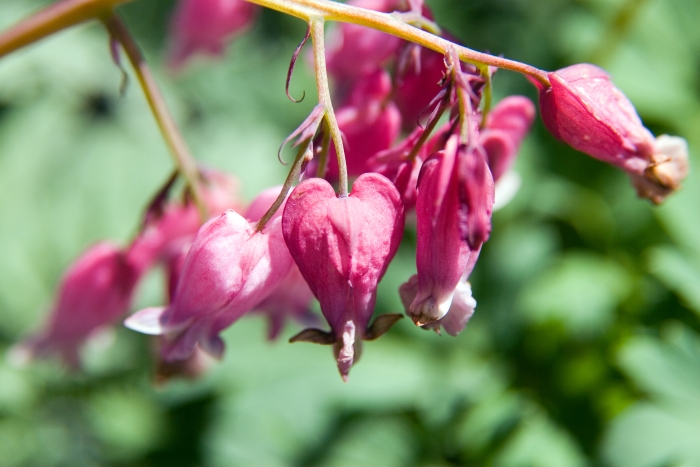Wild Bleeding Heart
(Dicentra eximia)
Wild Bleeding Heart (Dicentra eximia)
/
/

Photo by David J. Stang
CC BY-SA 4.0






































































Estimated Native Range
Summary
Wild Bleeding Heart is valued for its graceful appearance and long flowering season, making it a favorite for woodland gardens, shade gardens, and naturalized areas. It is relatively low maintenance and can be used as a ground cover or border plant. It prefers part shade but can tolerate some morning sun, and it requires consistently moist soil with good drainage. While it is generally disease-resistant, it can be susceptible to root rot in overly wet conditions. This plant is also deer-resistant, making it a good choice for areas with high deer populations.CC BY-SA 4.0
Plant Description
- Plant Type: Herb
- Height: 1-1.5 feet
- Width: 1-1.5 feet
- Growth Rate: Moderate
- Flower Color: Pink, Purple, White
- Flowering Season: Spring, Summer
- Leaf Retention: Deciduous
Growth Requirements
- Sun: Part Shade
- Water: Medium
- Drainage: Fast, Medium, Slow
Common Uses
Bee Garden, Bird Garden, Border Plant, Butterfly Garden, Deer Resistant, Hummingbird Garden, Low Maintenance, Potted Plant, Rabbit Resistant, Rock Garden, Showy Flowers, Street Planting
Natural Habitat
Rich, moist woodlands and mountainous regions in the Eastern United States, particularly in the Appalachian Mountains
Other Names
Common Names: Turkey Corn , Wild Bleeding-Heart , Fringed Bleeding-Heart , Turkey-Corn , Staggerweed , Furirhjärta
Scientific Names: Dicentra eximia , Diclytra eximia , Diclytra formosa , Fumaria formosa , Bicuculla eximia , Bikukulla eximia , Capnorchis eximia , Corydalis eximia , Dielytra eximia , Eucapnos eximius , Fumaria eximia
GBIF Accepted Name: Dicentra eximia (Ker Gawl.) Torr.